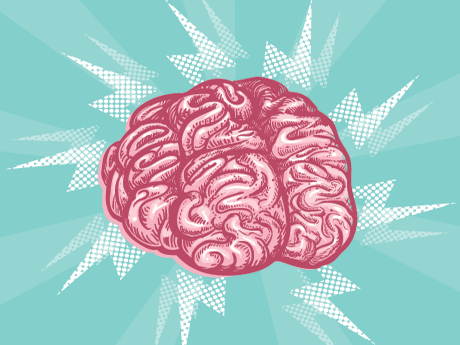Since the first cave paintings were discovered, over 27,000 years ago, telling stories has been used as a fundamental means of communication. Now, as well as historical evidence, there is scientific evidence to prove that we humans actually crave stories, like a child may crave sugar! Recent research in neuroscience has revealed that our brain is actually hardwired to respond to a story. So, in the words of a famous sugary advertiser, why is it so???
Why the brain loves stories
We all enjoy a good yarn – around the campfire told by your grandpa, at the cinema being delivered by Hollywood or at the bar being recounted by your mate. But why is it that we feel so engaged when we hear a narrative about events?
It’s actually quite simple. If we listen to a presentation with boring Powerpoint points, certain parts of the brain get activated. Scientists call these Broca’s area and Wernicke’s area. The messages hit the language processing parts of our brain, where we decode words into meaning, and that’s it. Nothing else happens.
When we are being told a story though, things change dramatically. Not only are the language processing parts in our brain activated, but all other areas that we would use when experiencing the events of the story are too. The feelings, emotions, physical reactions bits. Pretty cool hey?
The thing is, humans at their very base are social beings who regularly interact with strangers – at the supermarket, the park, a restaurant, a workplace. Stories are an effective way to transmit important information and values from one individual to another. Stories that are personal and emotionally compelling engage more of the brain and are thus better remembered. They get to the core of us as humans, far more readily than simply stating the facts.
There are two key aspects to an effective story
First, it must capture and hold our attention.
Second, it must transport us into the characters’ world.
The way to keep an audience’s attention is to continually increase the tension in the story. When you maintain attention, the brain produces symptoms similar to those of arousal – the heart and breathing speed up, stress hormones are released and our focus is high. In story terms, once it has sustained our attention long enough, we may begin to emotionally resonate with the story’s characters. This is where the ‘transportation’ begins. (Think sweaty palms as you watch James Bond fight with a villain on top of a speeding train! Or an aching of the heart as the unrequited love of the heroine plays out in front of you.)
Transportation is an amazing neural feat. We may be watching a movie or reading a book, knowing intellectually that it’s fictional, and yet our brain simulates the emotions we intuit the character must be feeling and then we begin to feel those emotions too.
Stories bring brains together
Emotional simulation is the foundation for empathy. It is particularly powerful – and useful – for social creatures such as humans, as it helps us quickly decide whether those around us are happy, sad, angry, dangerous or friendly. This mechanism keeps us safe but also allows us to rapidly form relationships with a wide variety of members of our species – more so than any other animal. By knowing someone’s story, where they come from, what they do, and who you might know in common, relationships with strangers can be formed quickly. And when people come together, amazing things can be built, created, designed, and imagined.
How we learn through stories
As it turns out, not all stories hold our attention nor transport us into a character’s world. (Remember those tedious books you were forced to read in high school and the hideous training videos you were forced to watch at your corporate sales training day?). NOT ALL STORIES ARE CREATED EQUAL!!! The most engaging and successful stories require the ‘dramatic arc’ structure. You start with something new and surprising then increase tension by introducing difficulties that the characters must overcome, often because of a failure in their past, and then you lead up to a climax where the characters must look deep inside to overcome the impending crisis. Once this transformation occurs the story resolves itself. This is the perfect story framework and one that tends to leave its message behind more memorably.
How stories connect us with strangers – and ourselves
Stories can motivate us to look inside and make changes to become better people. We can make conscious choices about the stories we choose to create, believe, follow and live out. By the same token, we have free will to change a story, mid-narrative, if it doesn’t suit us any longer.
Stories have huge power to create empathy and propel us to take action we otherwise wouldn’t; we can find ourselves stepping into a zone well beyond our usual comfort. These stories can lead us to ‘helping’ behaviours when we engage with others, which generally makes us humans happier. Caring for strangers is advocated by many philosophical and religious traditions for good reason – it helps give our lives purpose and drives us forward.
And so it is, that by listening to the stories around us, we can find ourselves interacting with people and places we may never have dreamed or conceived of. As a wonderful by-product, we may find ourselves doing work and living a life we never knew possible, creating a deep connection with ourselves that is invaluable and precious.


